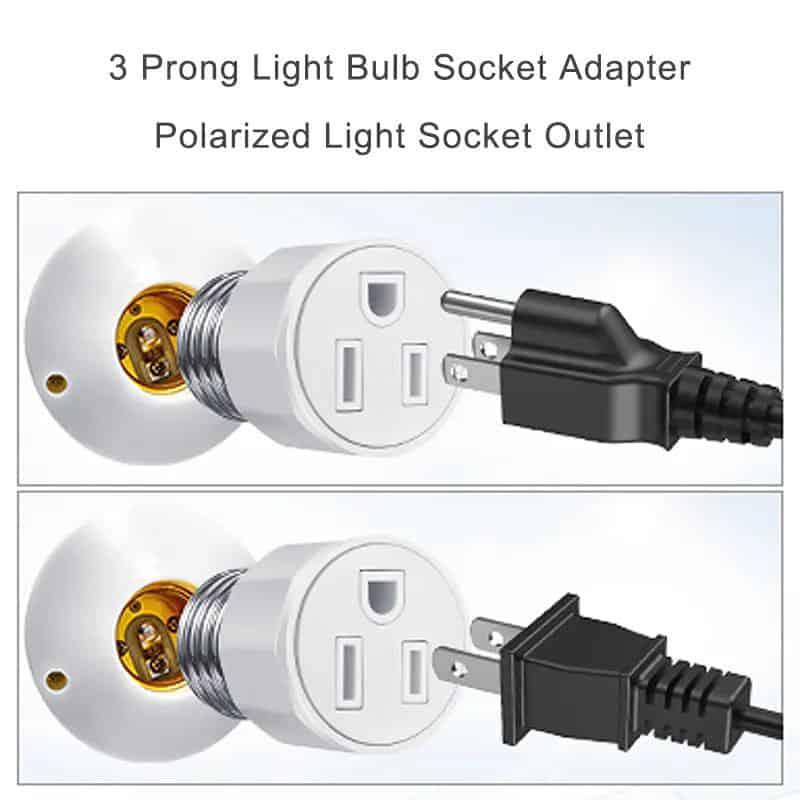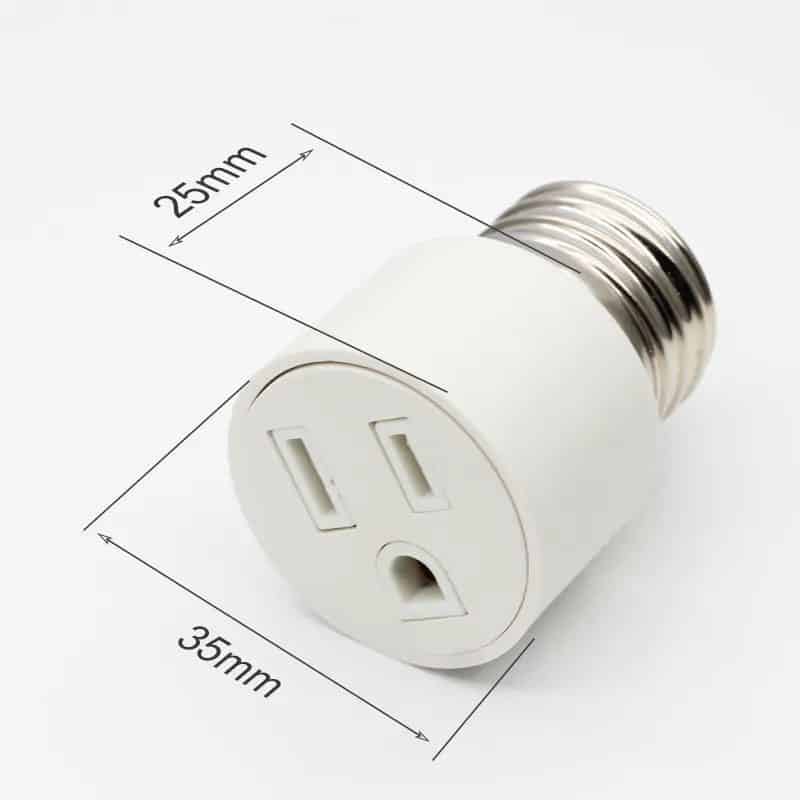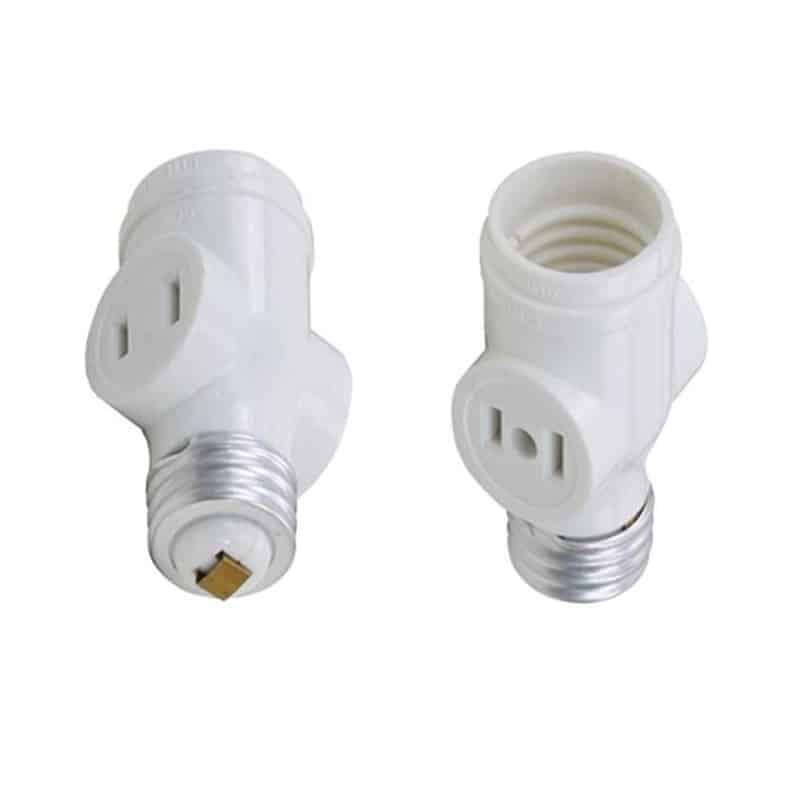Some of you handy folks out there might need an extra power outlet in a place where you only have a light fixture. Running new electrical wiring for an outlet can be expensive and time-consuming. It’s not practical for some projects. You can convert a light socket to an electrical outlet to get power where you need it without running new electrical wiring.
Yes, you can convert a light socket into an electric outlet safely by using a socket-to-outlet adapter. This adapter is an affordable and straightforward device that screws into an existing light socket, transforming it into a functional outlet. However, to ensure safety, it’s essential to take precautions, such as turning off power to the fixture and using a voltage tester to verify no live current.
Converting a light socket is a relatively easy process, but following the correct steps is essential to avoid issues. To successfully convert a light socket into an electric outlet, gather the necessary materials and tools. At a minimum, you’ll need a socket-to-outlet adapter, a voltage tester, a screwdriver, and possibly pliers. Electrical tape can also be useful, especially if you’re concerned about keeping connections stable.

Additionally, depending on where you live, you may need an adapter suitable for your socket type; for example, the E26 base is common in North America, while E27 is standard in Europe.
To convert the socket, follow these straightforward steps. First, turn off the power to the light fixture at the circuit breaker. This step is crucial, as it eliminates the risk of electric shock while you work on the fixture. Use a voltage tester to confirm that the power is indeed off.
Next, remove the existing light bulb from the socket. Some light sockets may have specific configurations, such as the E26 or E27 Edison screw bases, so make sure you remove the bulb carefully according to your socket’s style. If the socket uses a bayonet or other specialized fitting, additional care may be needed to remove the bulb safely.
After the bulb is removed, insert the socket-to-outlet adapter into the socket. Make sure to screw it in securely so that it makes a reliable electrical connection. For some sockets, especially those handling high-temperature lights like halogen or incandescent, checking that the adapter is firmly in place is essential to prevent overheating or potential hazards. Once the adapter is securely fitted, you have essentially created a new power outlet.

Now, it’s time to test the newly converted outlet. Plug in a small device or appliance to ensure it functions correctly. It’s best to start with something low-power, such as a phone charger or small fan, to avoid putting too much strain on the adapter and light socket. If there’s no power or the connection seems loose, check the adapter’s installation and confirm the power is on at the breaker. If issues persist, consider consulting an electrician to ensure your setup is safe.
Converting a light socket into an outlet has some distinct advantages. It’s cost-effective, requires minimal tools, and takes just minutes to complete. For renters, it’s also a temporary and non-invasive solution that won’t involve complex wiring changes. However, there are also limitations. Light sockets generally aren’t designed to handle heavy electrical loads. Therefore, it’s important not to use the converted outlet for power-intensive appliances such as heaters, microwaves, or refrigerators, as this can overload the circuit.
If converting a light socket doesn’t meet your needs, other options can provide additional outlets. One alternative is to use power strips or extension cords, though these should also be used cautiously to avoid overloading circuits. Another option is consulting an electrician to install a new outlet, which is especially useful in high-use areas. In some cases, it’s preferable to add a dedicated outlet for appliances or devices that need a stable, higher-capacity power source.

Throughout this process, safety remains a top priority. Always be mindful of your home’s load capacity, ensuring you don’t exceed the power limits of the converted outlet. Avoid using high-wattage appliances with the adapter, and periodically check the adapter for signs of wear, such as frayed wiring or a loose connection. Since sockets are not designed for heavy loads, overloading can lead to overheating, which poses a risk of fire.
In summary, converting a lamp socket to an electrical outlet is a practical solution for adding an extra power source without a lot of changes to your wiring. Using a simple adapter and following some safety guidelines, you can get an outlet without spending a lot of money. This is great for small needs, and, when done properly, is a safe addition to your room.













